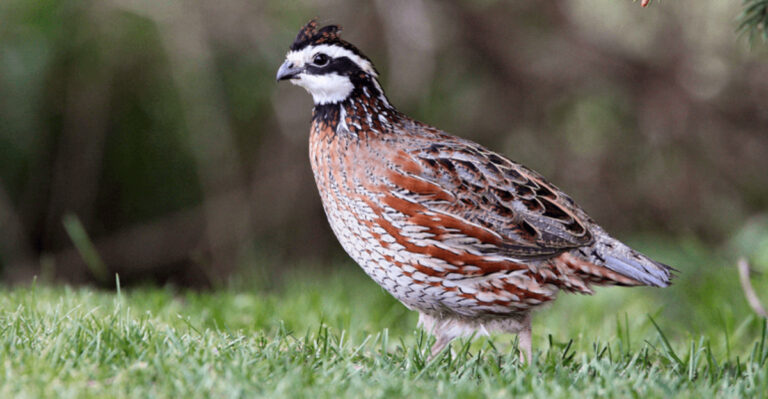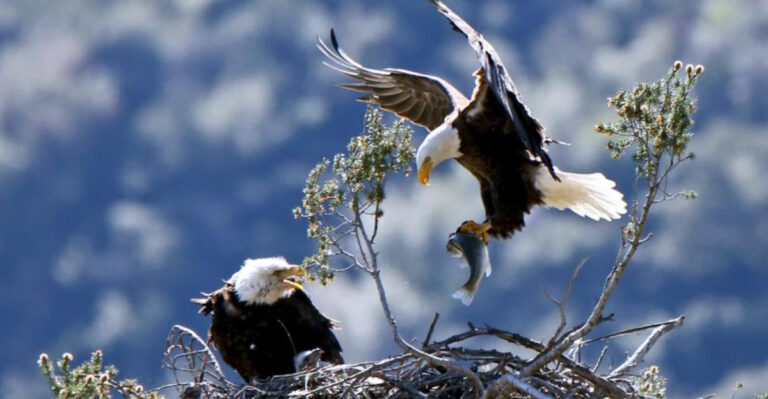12 Yellow And Black Birds That Are Nature’s Masterpieces
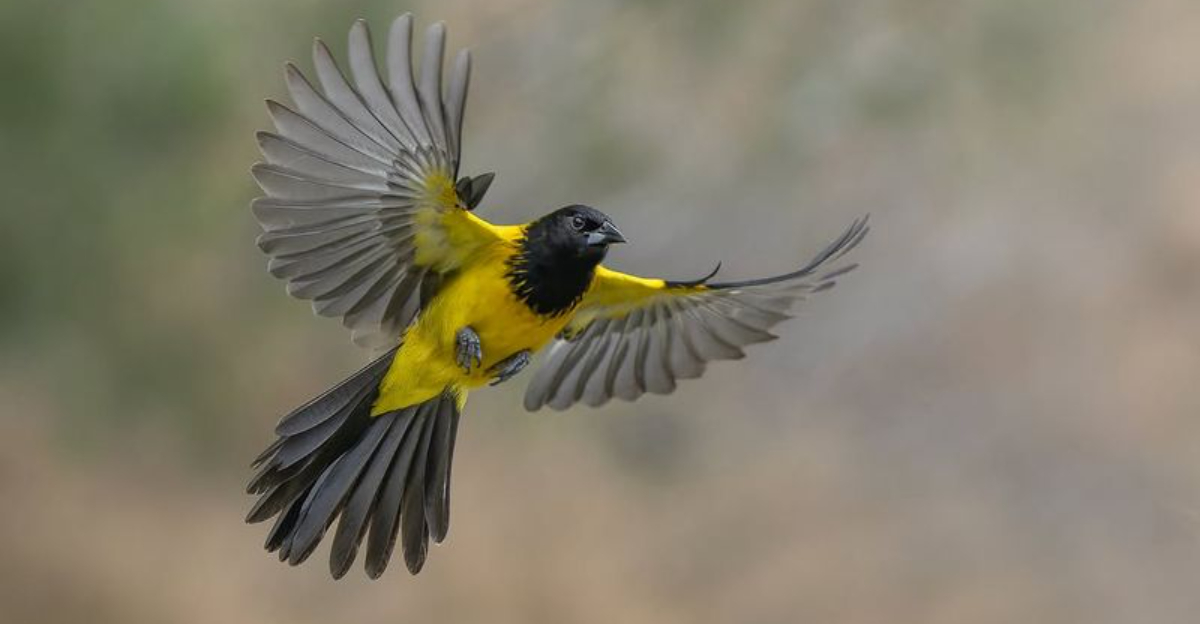
Who knew that nature could paint with such bold colors? Yellow and black birds are like flying art pieces, their plumage a striking contrast that turns heads wherever they go.
These birds are not just about looks; each one carries a unique tale and charm. Let’s explore these avian wonders, each one a masterpiece in its own right.
1. American Goldfinch
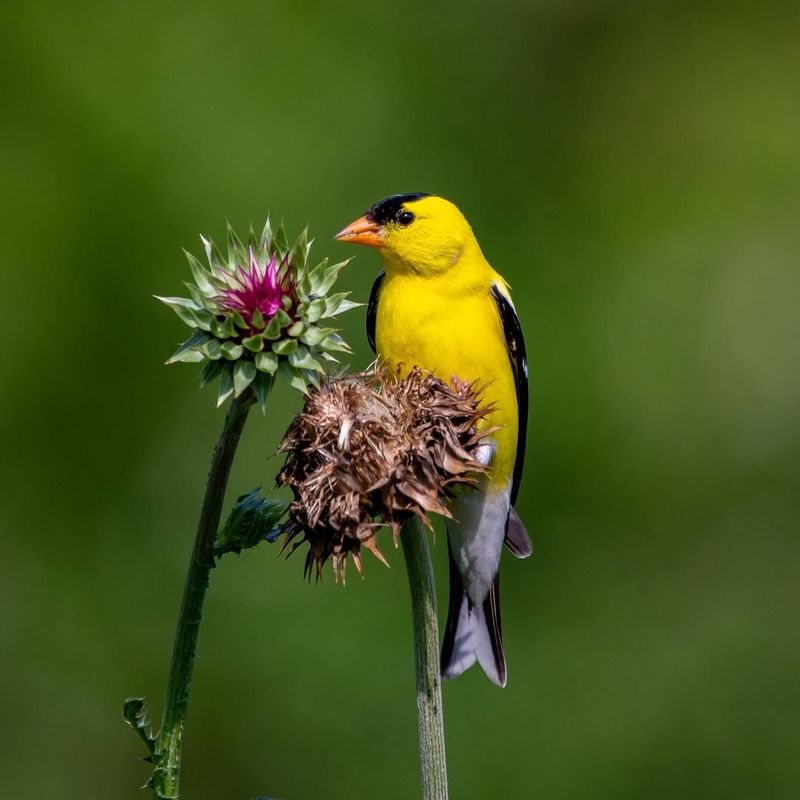
Ever seen a sunflower with wings? Meet the American Goldfinch! Sporting vibrant yellow feathers and contrasting black wings, this little bird is like a ray of sunshine flitting through the fields. Famous for its cheerful song and energetic flight, it is a delight to birdwatchers everywhere.
During winter, these birds undergo a magical transformation and their plumage turns a muted brown. Their preference for sunflower seeds makes them frequent visitors to garden feeders. Who wouldn’t want such a sunny companion around?
2. Eurasian Golden Oriole
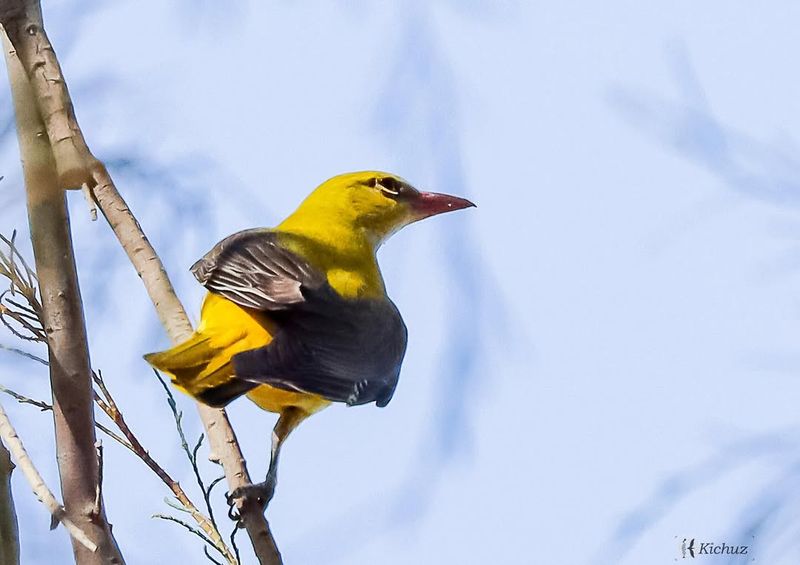
Imagine a flash of gold darting through the trees, and you’ve got the Eurasian Golden Oriole. This bird’s vibrant yellow body contrasts beautifully with its black wings and tail, creating a visual delight. Known for their melodious calls, they repeat gentle, flute-like notes that echo through the forest.
They’re shy, elusive creatures, rarely seen even by keen birdwatchers. Their diet of insects and fruit keeps them agile and energetic as they flit from tree to tree. Truly, a golden treasure of nature!
3. Common Yellowthroat
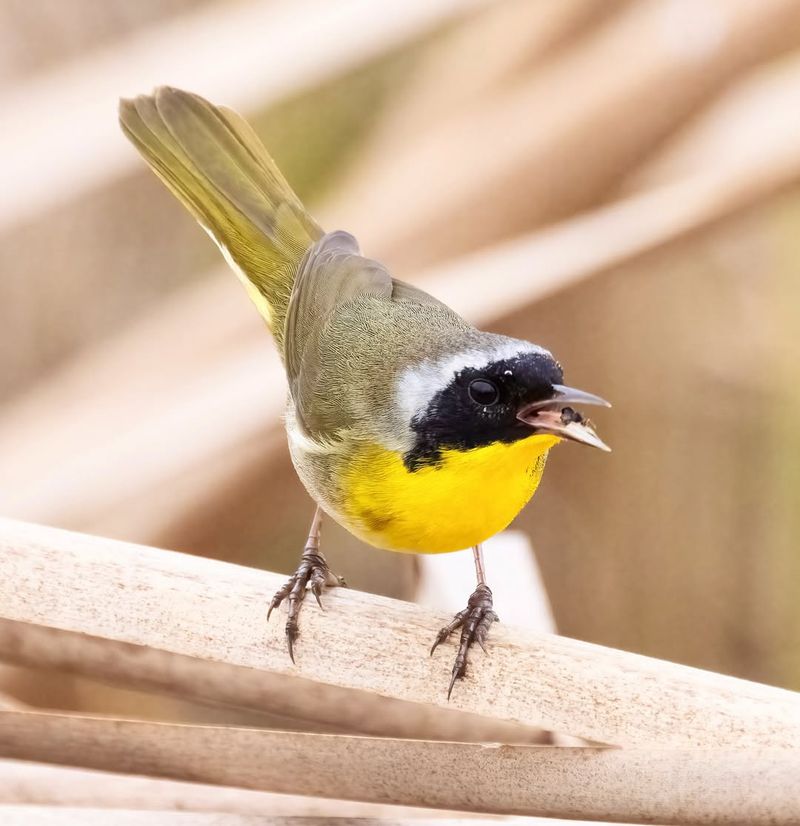
In the marshlands, a tiny masked bandit flits among the reeds—the Common Yellowthroat. With a vibrant yellow chest and a striking black mask, this bird is a dashing sight to behold. Its chattering, distinctive ‘wichity, wichity, wichity’ song often gives away its location.
They are small warblers that thrive in moist thickets, feeding on insects and caterpillars. Despite their bold appearance, they’re often heard before seen. Who knew birdwatching could feel like a game of hide and seek?
4. Baltimore Oriole
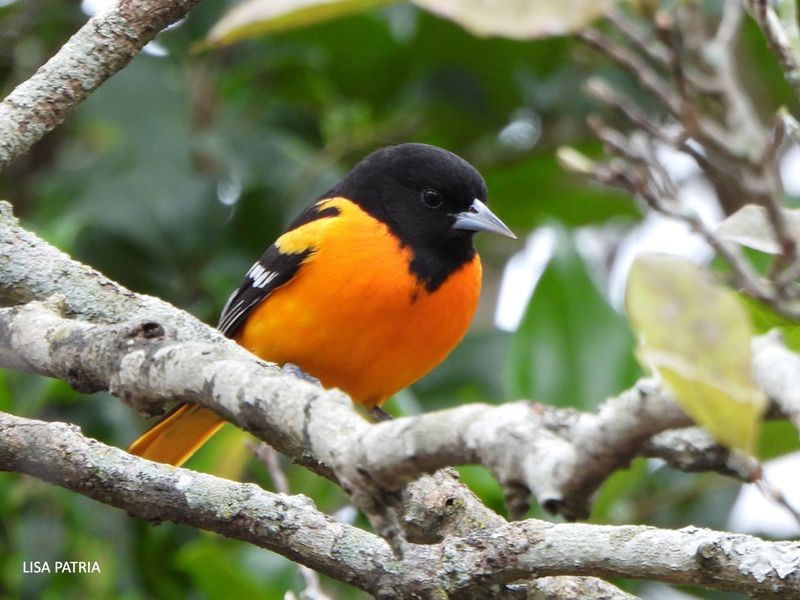
Is it a bird or a flame? The Baltimore Oriole’s fiery yellow-orange and black hues are truly mesmerizing. They often make appearances in gardens during spring and are known for weaving intricate hanging nests that look like nature’s finest crafts.
Orioles are fond of nectar and fruit, making them a gardener’s ally in controlling pest insects. Their sweet, flute-like song adds a charming background melody to any outdoor space. These birds bring a touch of the tropics wherever they go!
5. Yellow-Headed Blackbird
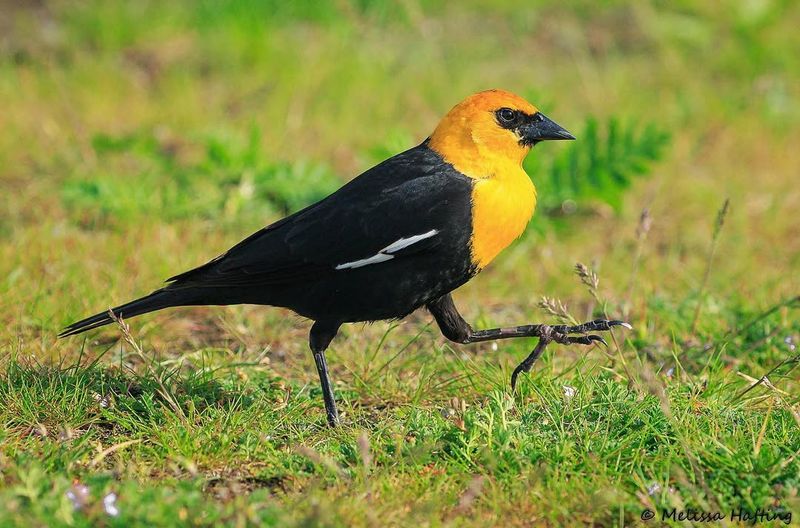
Fancy a bird with a touch of drama? The Yellow-Headed Blackbird lives up to its name with a vivid yellow head and chest set against a velvety black body. Found in marshy areas, these birds are quite the spectacle during the breeding season.
Their strange, grating calls are unmistakable and add a unique soundtrack to their wetland homes. They might not win any singing contests, but their striking appearance makes up for it. Definitely a bird with personality!
6. Scott’s Oriole
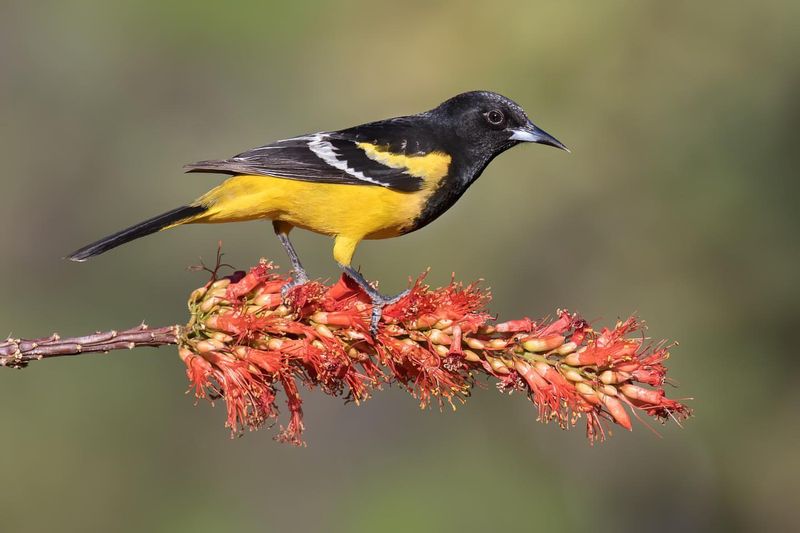
Out in the arid desert, Scott’s Oriole is a splash of sunshine. Its lemon-yellow body paired with black wings and head is a striking combination. This bird is often spotted in the southwestern United States, particularly fond of yucca plants where it builds its nest.
Known for its rich, whistling song, Scott’s Oriole brings melody to the desert landscape. They have a sweet tooth too, enjoying nectar from flowers. It’s like a desert fiesta wherever they go!
7. Masked Trogon
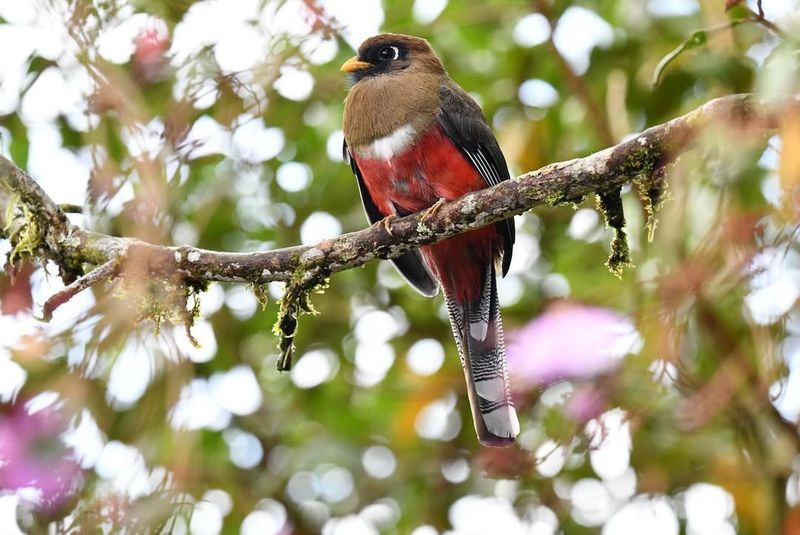
Deep in the rainforest, the Masked Trogon brings a splash of color. This bird’s vivid green and yellow feathers are complemented by a distinctive black mask around its eyes. Known for their calm demeanor, they sit quietly, waiting to catch insects in flight.
Their presence is often signaled by their soft, repetitive calls echoing through the dense foliage. With a diet of fruits and insects, these birds are the rainbow gems of the forest, adding a dash of mystery to their allure.
8. Pied Bushchat
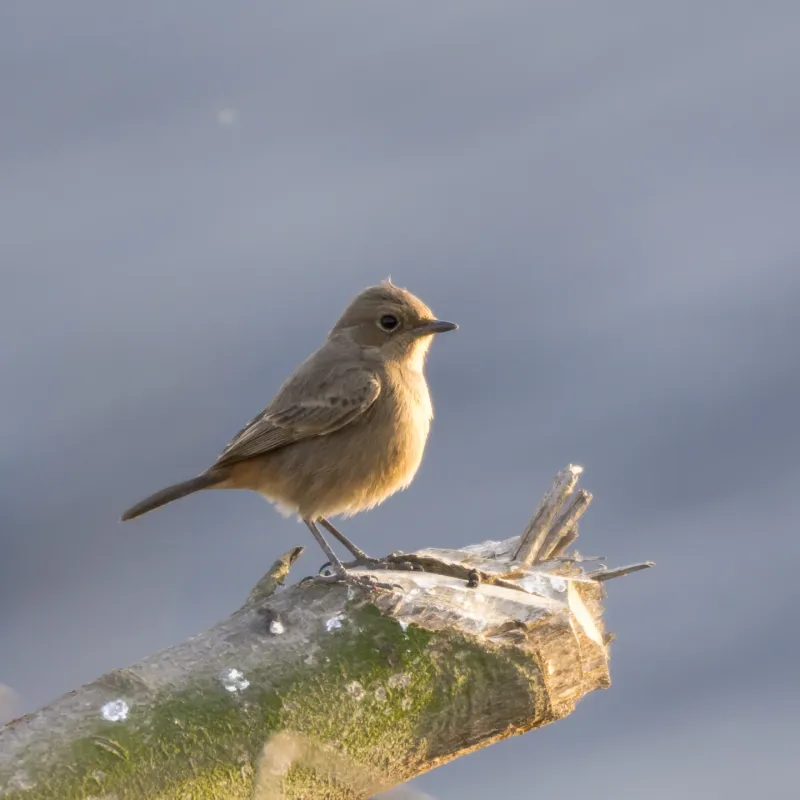
In the open fields, the Pied Bushchat stands out with its monochrome aesthetic. Though predominantly black, the male sports an eye-catching white belly and shoulder patch, often seen perched conspicuously on twigs.
These birds are lively insect hunters, darting off to catch prey mid-air. Their cheerful, chirpy calls bring life to the grasslands, making them a favorite among birdwatchers. Despite their simple palette, they have a charming presence that captures attention effortlessly. Often, it’s the simplicity that leaves a lasting impression!
9. Western Tanager
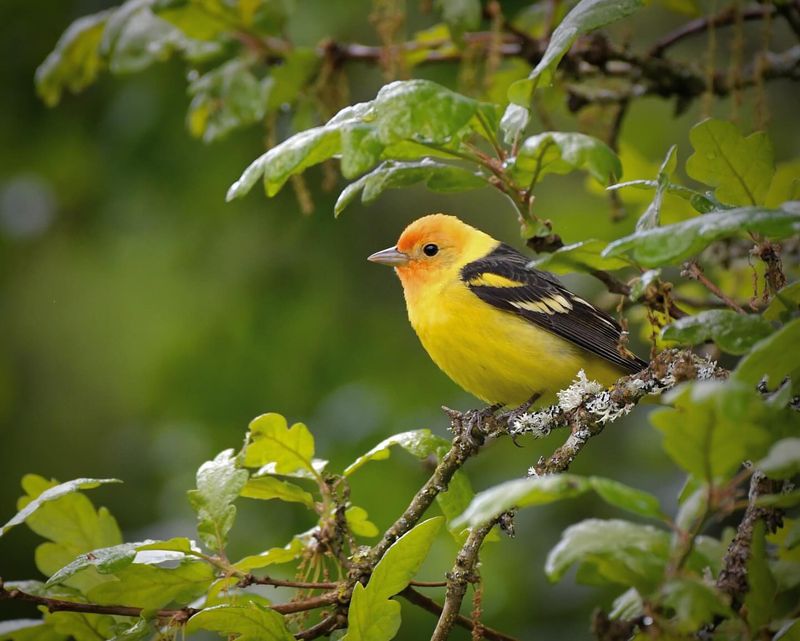
The Western Tanager is a burst of color in North America’s woodlands. With a fiery orange-red head and bright yellow body, they’re often mistaken for tropical birds. These tanagers migrate long distances, bringing a tropical flair to northern regions during summer.
Their diet consists of insects and fruits, often caught in mid-air or plucked from foliage. Their distinctive, raspy song adds to their vibrant appeal. These birds remind us that sometimes, the brightest colors are found right at home!
10. Yellow-Throated Warbler
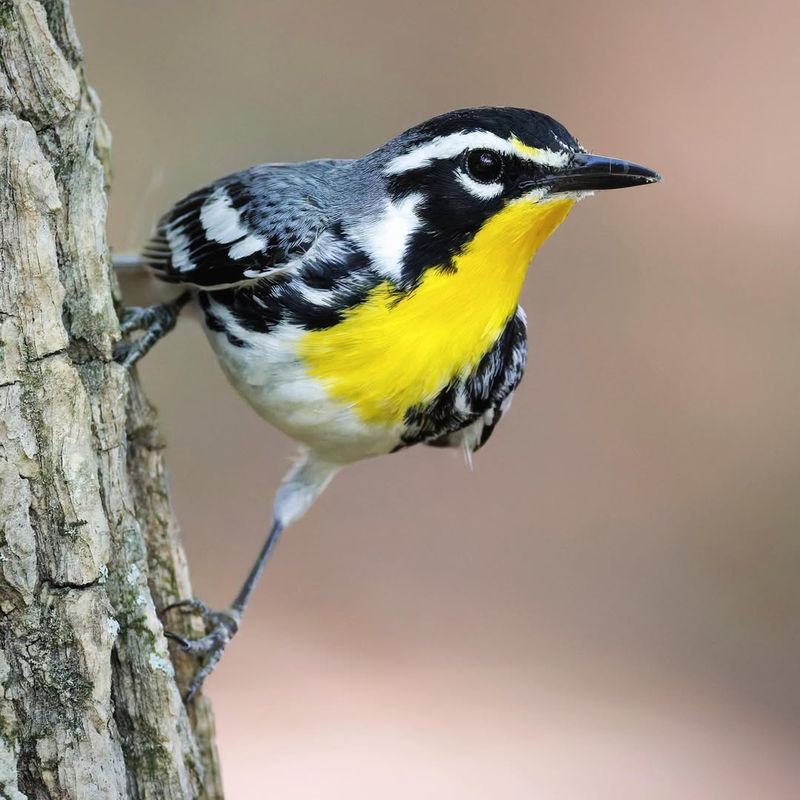
Yellow-Throated Warbler’s bright yellow throat and grey wings make it a standout in its leafy residence. Known for its sweet, melodious song, this bird adds a gentle soundtrack to the forest.
They’re agile foragers, finding insects and spiders among the branches. Their quick movements and charming song make them a joy to spot. It’s as if the forest floor has a symphony of its own, thanks to these little musicians.
11. Audubon’s Oriole
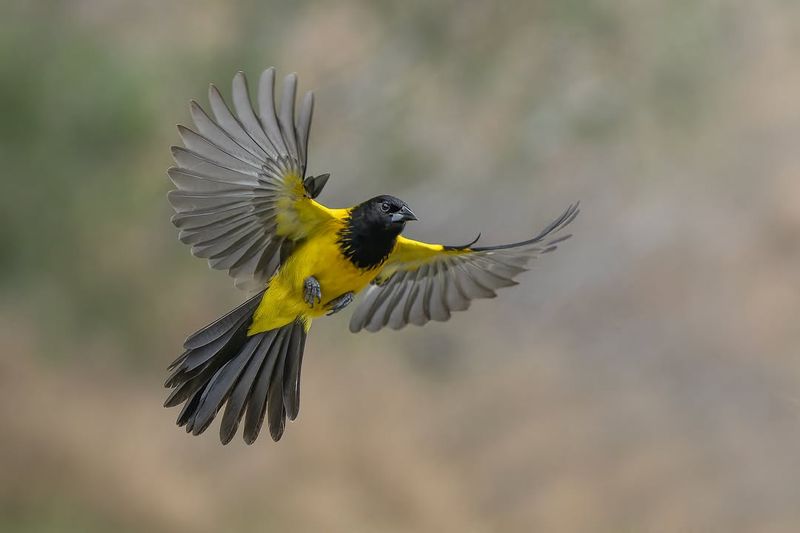
Nestled in the warm climates of the southern United States, Audubon’s Oriole is a sight to behold. Its bright yellow body and black head create a striking contrast that is hard to miss. These orioles are known for their distinctive, flute-like calls that echo through their habitat.
They have a penchant for insects and fruit, frequenting backyard feeders when available. Seeing one of these beauties is like finding a golden nugget in your backyard!
12. Mangrove Golden Whistler
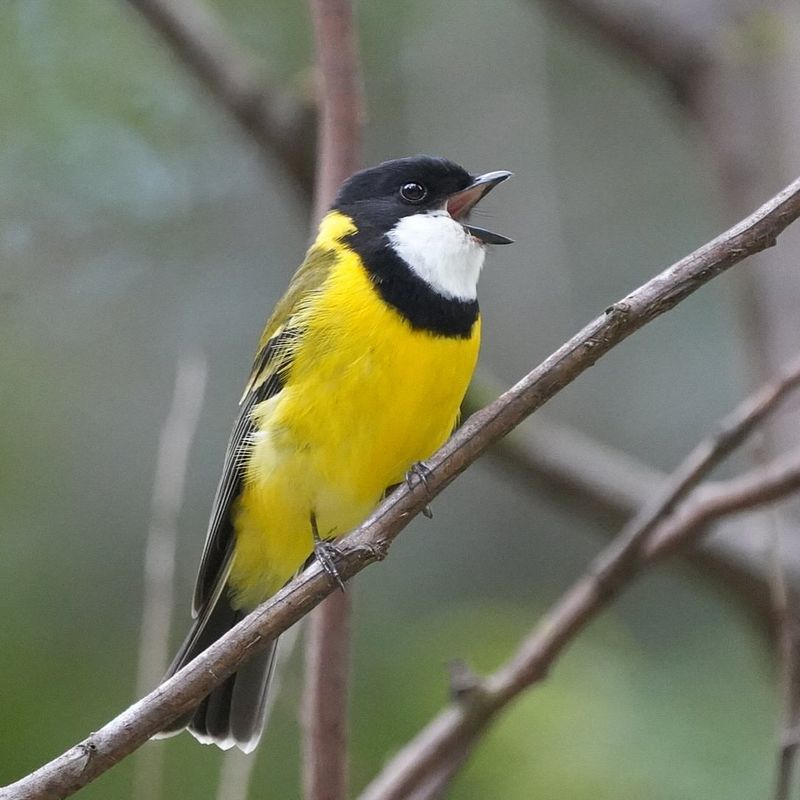
Nature’s little songbird. Its golden-yellow chest and contrasting black eye mask make it a striking addition to the lush greenery. These birds are known for their melodious whistling that serenades the mangrove forests.
Their diet mainly consists of insects, which they skillfully catch with precision. Their presence is a reminder of the hidden beauty within dense thickets. Though often heard before seen, they are worth the search!



